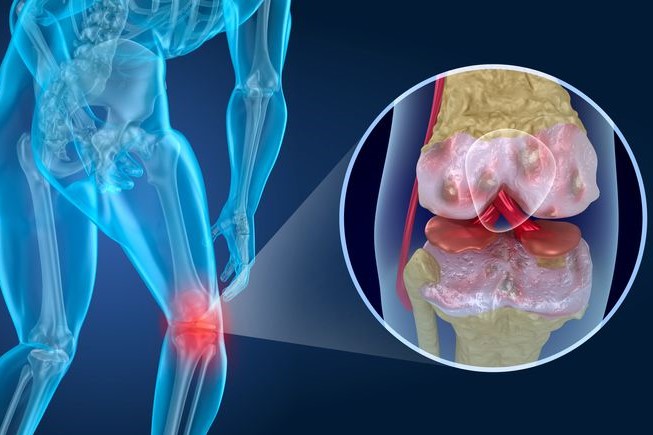Injuries are common in our daily lives, and one of the most common injuries is a bump or scrape on our knees. The pain that comes with such an injury is inevitable, but what often trips us up is the fact that there seems to be no end to the time it takes for those bruises or scrapes to heal. This post will explore why cartilage takes so long to heal and how you can speed up the process. It will also include some common treatments used to treat joint injuries.
What Is Cartilage?
Cartilage is a connective tissue in most joints in the human body, acting as a shock absorber between bones. All cells in cartilage are alive and function similarly to the cells in bone. Because of this, when a cartilage injury is sustained, the cells are often damaged and can bleed into the surrounding tissue. This leads to pain, swelling, and limited movement. Cartilage injuries can be caused by several things, including falls, accidents, and sports injuries. Over time, osteoarthritis is often triggered by multiple minor cartilage injuries to the knee joint.
The Healing Process of Cartilage Injuries

Cartilage injuries take longer than other types of injuries to heal, which has to do with the cells that make up the cartilage. Cartilage is not a solid surface; it is mainly made of water and can be compressed, reducing the pressure placed on the knee. Cartilage takes longer or may never heal because it has no blood supply in the area. For healing to begin, a process called vascularization must occur. Vascularization is when new blood vessels are created, which bring fresh, oxygenated blood to the injured area. As this occurs, cells called fibroblasts begin to multiply to form a clot. Once these cells multiply, they create collagen, which is a protein that is responsible for the creation of new tissue.
Lack of blood supply is the main reason cartilage takes longer to heal. However, not all injuries see a complete lack of blood supply; some can result in complete cartilage vascularization, while others will not. How quickly this neovascularization can occur depends on the injury. Cartilage injuries have been shown to have different healing rates depending on the person’s age. Cartilage healing rates decrease as we get older. In general, however, cartilage has been found to take between four to twelve months or longer to heal.
The stages involved in the healing of cartilage injuries are inflammation, vascularization, and maturation. Inflammation causes pain, swelling, and redness in an injured area. Inflammation is caused by the release of chemicals such as histamine, serotonin, and kinins. Vascularization is when blood vessels are created to bring oxygen to the injured area to heal it. The next stage is maturation, which involves the production of scar tissue that fills in the wound caused by injury and protects the area from further injury. Maturation occurs when cells multiply and form a clot. Collagen, a protein that helps to clot and create new tissue, is then created. This process can take anywhere from four months to more than twelve months.
Cartilage Injuries and Treatments

The good news is that there are ways to treat these injuries and speed up the healing process so you can get back to doing the things you love. One of the main ways to treat cartilage injuries is through surgery. It is also the leading cause of why it takes so long for cartilage injuries to heal. Cartilage surgery is a common procedure performed on the knee and is one of the most effective ways of helping someone recover from a cartilage injury. Surgery is preferred because it can help to speed up the healing process tremendously. To keep the conditioning of the knee in check, follow specific physical exercises and recommendations as well.
If a person has been diagnosed with compromised or severely damaged cartilage, doctors often recommend a surgery called “cartilage repair.” Patients usually undergo this procedure if they have severe arthritis, but sometimes it’s also used as preventive treatment before other surgeries such as joint replacement.
After surgery, patients often must undergo another surgery to remove excess scar tissue from under the newly formed cartilage. Doctors typically use X-rays and ultrasounds to look at the bone in the joint before and after surgery and then take MRIs after the surgery. These techniques are used to diagnose bone problems or osteoporosis but also have a chance to reveal problems with cartilage, for example, abnormal growth or other conditions in the joint.

For example, one issue that can come up after cartilage surgery is hyperplasia. This means more than the normal cartilage cells are forming in a particular area. As mentioned above, these cells are alive and work like normal healthy cartilage cells, but the problem with hyperplasia is that they don’t do anything to help the joint – they clump up and make it harder to move around. Also, some people with hyperplasia may have arthritis due to it.
There are also other ways to treat cartilage injuries. One such method is compression, which involves applying pressure over two months or longer to help promote healing. Compression therapy involves wearing a compression device for a certain period, which helps reduce irritation or inflammation. This can involve using a compression sleeve or taping, but it does not come close to reaching all areas of your body that may be affected by such an injury.
Rich plasma injections are another way to treat bone injuries and conditions. They involve injecting your blood, or rich plasma, into the affected area of cartilage. Your rich plasma will stimulate the growth of your body’s stem cells and help them heal the affected area. This procedure is not a common choice for those looking for a fast solution to their injury problems and requires multiple treatments.
The other method is icing, which involves applying cold to the joint at any time of the day. This will help to keep osteoarthritis at bay and can be effective in helping speed up the healing process, though it is not preferred because of the pain that can be caused after application.
How to Prevent Cartilage Injuries

First, there are many ways you can go about protecting your knees in the first place. Always wear the proper protective gear during sports, such as pads and helmets. The protective gear should fit properly and be worn by the appropriate athletes. If you participate in sports such as judo or ballet, take precautions so your knees don’t get injured during practices.
Another way to prevent injuries is through the use of supplements. While research has not fully discovered how effective these supplements are, some can help your knee stay healthy over time. One is chondroitin sulfate, which can be found in cartilage and skin but also comes in supplement form. This supplement helps to build up the cartilage in your body and can slow down the damage caused by osteoarthritis.
Ensure your orthopedic doctor checks your knees regularly to ensure nothing is going awry. Also, never ignore the pain in the knee, as it can be a sign of a potential issue that needs to be addressed. Be sure to report any other pain you experience in your knee to a doctor immediately to address it.
Because cartilage injuries tend to heal more slowly than other types of injuries, you must work with a doctor daily for treatment. How quickly the cartilage heals will largely depend on the person, their lifestyle, and other factors that cannot easily be controlled. The healing process of these injuries is not guaranteed, but when taken care of properly and professionally, your recovery may happen faster than it previously would have.

